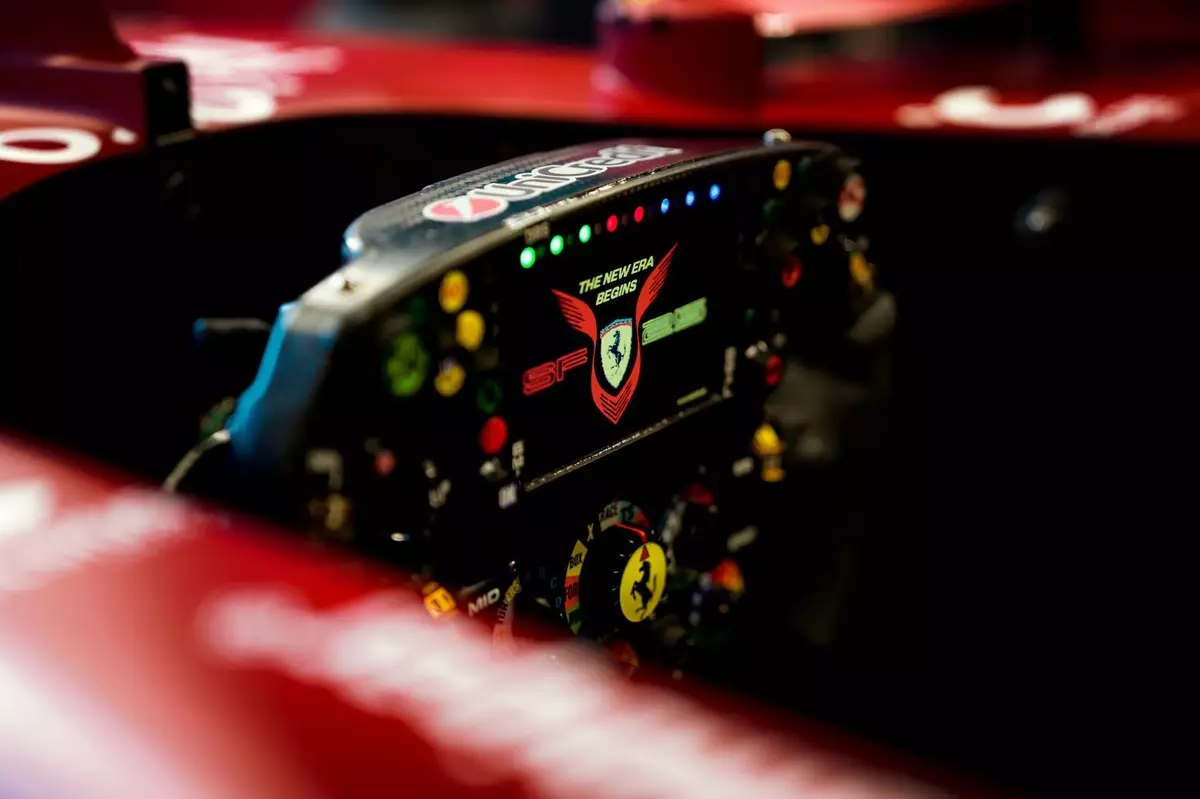Lewis Hamilton’s transition to Ferrari has sparked excitement in the Formula 1 world, albeit with a complex array of challenges that highlight the intricacies of adapting to a new team. Despite not having flawless weekends in Australia and China, Hamilton’s sprint pole and victory in Shanghai represented significant milestones, underscoring his commitment to excellence and proving that he is still a formidable force on the track. The car he is now piloting, the SF-25, is a marked departure from the vehicles he has driven during his 12-year tenure at Mercedes. The differences are not merely cosmetic; they reflect profound shifts in engineering philosophies and operational setups that necessitate Hamilton to recalibrate his driving style.
Unlike the fine-tuned experience he crafted with the Silver Arrows, Hamilton finds himself re-learning key aspects of racecraft in the pursuit of peak performance with Ferrari. The slim margins that define competition at the front of the grid mean that every adjustment—whether it be mechanical setups or steering wheel configurations—can have overarching implications for race outcomes.
Engineering a Personalized Experience
Ferrari’s proactive approach in customizing Hamilton’s steering wheel to closely mirror what he has abandoned at Mercedes suggests an acute understanding of driver psychology. While Hamilton is adaptable, the comfort of a familiar interface can lead to faster acclimatization. The personal touches initiated by Ferrari go beyond tokens of welcome; they include substantial modifications designed to enhance ergonomics and usability.
The implementation of a customized clutch and gear lever is an example of how Ferrari is striving to provide Hamilton with a familiar feel while ensuring he can fully leverage the bespoke capabilities of the SF-25. Insights gleaned from Hamilton’s previous experience at Mercedes are pivotal in shaping this custom adaptation. The team is not just replicating hardware but altering the very software interface on his steering wheel to deliver the level of data that he thrives on, ultimately modifying performance parameters in a manner that prioritizes Hamilton’s preferences.
A Data-Driven Delight
One highlight of these modifications is Hamilton’s steering wheel now features detailed metrics that go beyond the basic stats displayed for teammate Charles Leclerc. By providing insights into engine mapping and battery state—factors that are crucial for optimizing performance—Ferrari has showcased its commitment to facilitating Hamilton’s success. This difference in display is strategic, acknowledging that Hamilton’s driving style demands a higher level of information to make real-time decisions during races.
The thoughtful adjustments in the steering wheel’s display tell a compelling narrative—one that balances the intricacies of cutting-edge technology with the nuances of driver demands. Ferrari’s decision to adapt these features specifically for Hamilton exemplifies how necessary customization can enhance a driver’s ability to react quickly and adequately during critical moments on the track.
Understanding Team Dynamics
However, it’s essential to recognize that the race car isn’t just about the driver; it’s a collective effort that involves the entire team. Ferrari’s modifications reflect a willingness to learn from Hamilton’s extensive experience while also being sensitive to Leclerc’s distinct preferences. This delicate balance is crucial for maintaining harmony within the team as Hamilton eases into his new environment. The integration of different configurations on the steering wheel highlights Ferraris’ effort to create a collaborative atmosphere where a variety of driving styles can thrive without conflict.
Indeed, adapting to Ferrari’s unique power unit management, characterized by a split visualization of engine and hybrid settings, presents another layer of complexity for Hamilton. This structural divergence from the single ‘STRAT’ knob approach used at Mercedes requires Hamilton to recalibrate not only the way he drives but also how he approaches the strategy behind managing his car’s performance.
The Fine Line Between Familiarity and Innovation
While all these adjustments may seem minor in isolation, they cumulatively work toward easing Hamilton into the rhythm of the SF-25. There’s a broader implication at play in how these changes reflect a synthesis of Hamilton’s legacy and Ferrari’s ambition to craft a tailored experience for their newly-acquired superstar. The blend of familiarity with innovation could serve to reinvigorate both the driver and the iconic team as they aim for success in a fiercely competitive environment.
As Hamilton continues to build chemistry with the SF-25, Ferrari’s willingness to adapt its systems around his established habits disrupts traditional team dynamics, opening the door to unprecedented potential. The careful calibration of Hamilton’s experience is not just an exercise in nostalgia; it’s a strategic investment in the current season that could yield rewarding results both for Hamilton and for the Scuderia. The question remains—will this hybrid approach significantly boost Hamilton’s capacity to challenge for victories, or is it merely a tactical Band-Aid on a more complex conundrum? Only time will tell as the season unfolds.


Leave a Reply